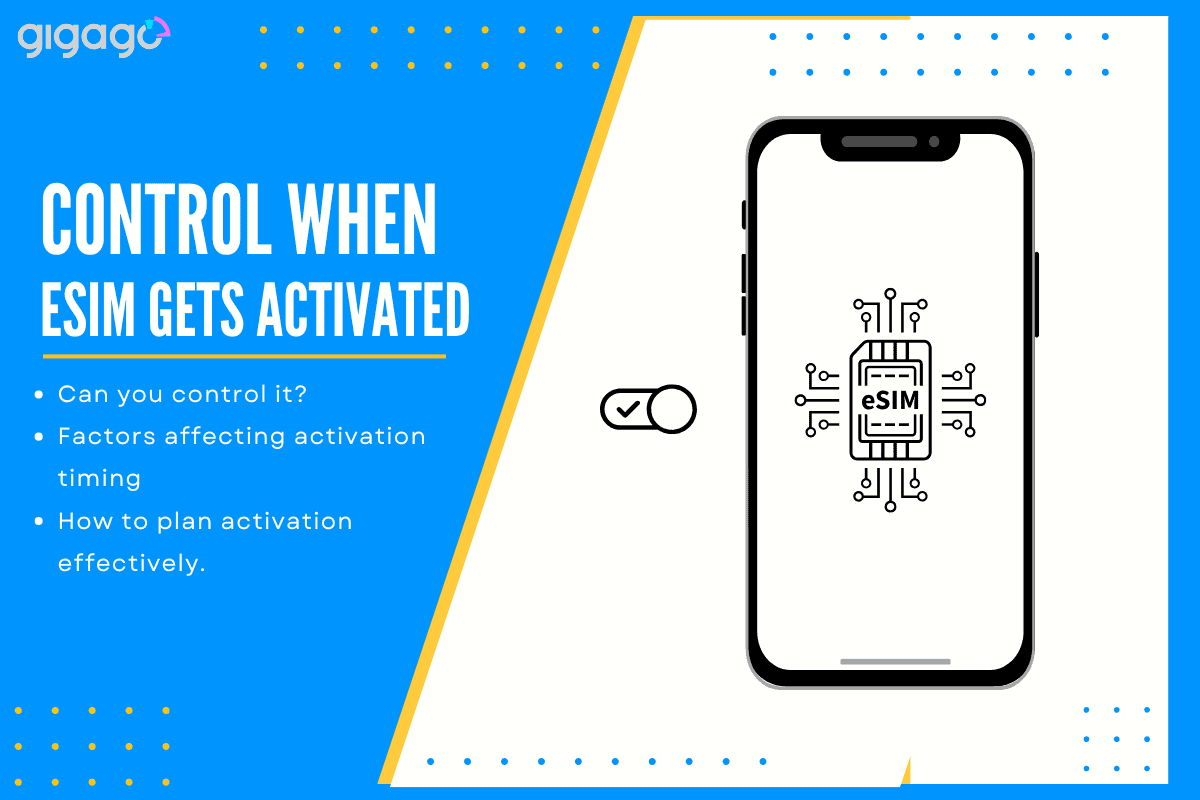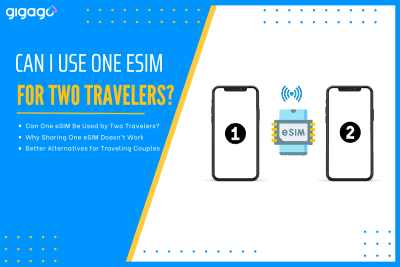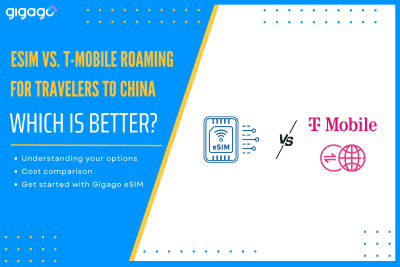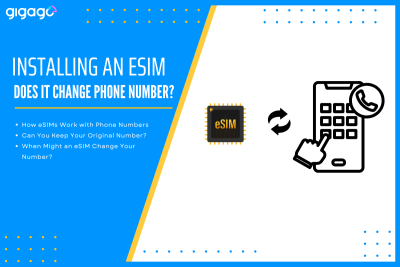When couples or friends travel together, it’s common to look for ways to save on mobile data. One question often comes up: “Can two travelers use the same eSIM?” The short answer is no – one eSIM cannot be used by two different travelers on two separate devices. However, there are practical alternatives that can […]
Can I control when my eSIM gets activated?
Controlling when your eSIM activates is key to managing your mobile connectivity effectively. This guide answer the question “Can I control when my eSIM gets activated?” and explain why and how you can control eSIM activation, along with related questions to help you use eSIMs confidently.

In this article
I. Why do you need to control when your eSIM gets activated?
Controlling eSIM activation ensures your plan starts when you need it most. For example, you might want to activate your eSIM only when you arrive at your travel destination to maximize the plan’s duration or delay activation until a new device is ready. This flexibility helps you:
- Avoid wasting plan days before you need them
- Prevent unexpected charges from early activation
- Align activation with specific needs, like travel or switching plans. For Gigago travel eSIM, you can buy eSIMs for more than 190 countries and activate them when ready, making it easier to plan connectivity for your trip.
II. Can I control when my eSIM gets activated?
Yes, you can often control when your eSIM activates, but it depends on the carrier. Activation typically starts when you scan a QR code or follow the carrier’s setup process, allowing you to choose the timing. However, some limitations exist:
- Some carriers automatically activate eSIMs upon purchase
- Others, like Gigago, give you up to 30 days to activate after purchase. Always check the carrier’s terms to understand restrictions and plan accordingly.
III. How does the eSIM activation process work?
The eSIM activation process is straightforward and user-driven. You typically:
- Scan a QR code provided by the carrier
- Download the eSIM profile to your device
- Follow on-screen prompts to connect to the network.
This process requires 02 things:
- a compatible device. Ensure your device is ready by checking the compatibility device list.
- an internet connection for setup.
Once initiated, the carrier authenticates your device, and the eSIM activates, usually within minutes.
IV. What factors affect eSIM activation timing?
Four major factors affecting when your eSIM activates are:
- Carrier policies: Prepaid plans often offer more control, while postpaid plans may activate automatically
- Activation deadlines: Some carriers, including Gigago, require activation within 30–90 days of purchase
- Device requirements: Your device must support eSIM and have updated software
- Regional regulations: International plans may have specific activation rules Knowing these factors helps you time activation effectively.
V. Can I deactivate or pause an eSIM after activation?
In most cases, you can deactivate an eSIM, but pausing depends on the carrier. Deactivation involves removing the eSIM profile from your device, stopping network connection.
Note that some carriers allow pausing prepaid eSIM plans temporarily. The reactivation may require a new QR code or carrier support.
VI. What are risks or limitations of delaying eSIM activation?
Delaying eSIM activation can have risks:
- Expiration dates: Unactivated eSIMs may expire (e.g., 30–60 days), voiding the plan and payment
- Missed promotions: Delays could forfeit discounts tied to quick activation
- Compatibility issues: Outdated device software may cause problems when activating later Review the carrier’s terms to avoid these risks and activate within the allowed timeframe.
VII. How can users plan eSIM activation effectively?
To plan eSIM activation well, consider these steps:
- Activate when needed, like before a trip or after device setup
- Confirm device compatibility and update software
- Review carrier terms for activation deadlines or automatic triggers
- Save QR codes or eSIM details securely for later use by aligning activation with your needs and checking these details, you can ensure smooth connectivity.
Overall, you can often control when your eSIM activates, giving you flexibility for travel or device upgrades. Understanding the activation process, carrier policies, and potential risks helps you make informed decisions.



